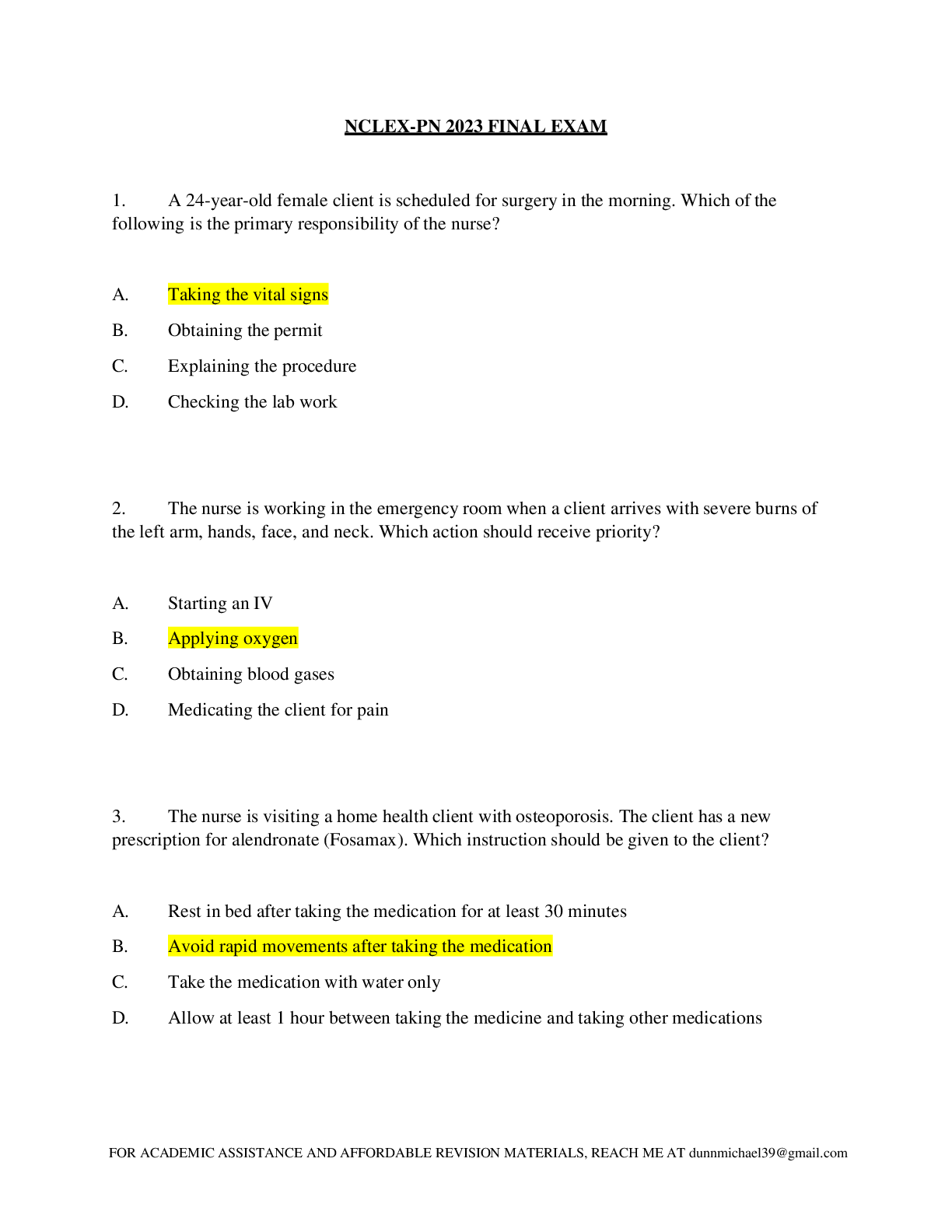*NURSING > NCLEX > Canadian Fundamentals of Nursing, 6th Edition Chapter 12: Critical Thinking in Nursing Practice Pott (All)
Canadian Fundamentals of Nursing, 6th Edition Chapter 12: Critical Thinking in Nursing Practice Potter / WITH ATTEMPTED AND CORRECT ANSWERS
Document Content and Description Below
Chapter 12: Critical Thinking in Nursing Practice Potter et al: Canadian Fundamentals of Nursing, 6th Edition MULTIPLE CHOICE 1. Critical thinking characteristics include which of the follow... ing? 2. Which of these patient scenarios is most indicative of critical thinking? 3. Professional nurses are responsible for making clinical decisions in order to do what? 4. The nurse needs a reminder of professional responsibility when performing which of these actions? 5. Which of the following demonstrates a nurse utilizing self-reflection to improve clinical decision making? 6. A nursing instructor needs to evaluate students’ abilities to synthesize data and identify relationships between nursing diagnoses. Which learning assignment is best suited for this instructor’s needs? 7. What is the first component of the critical thinking model for clinical decision making? 8. A new graduate nurse will make the best clinical decisions by applying the components of the nursing critical thinking model and which of the following? 9. The critical thinking skill of evaluation in nursing practice can be best described as which of the following? 10. The patient appears to be in no apparent distress, but vital signs measured by an unregulated care provider reveal that the pulse is extremely low. The nurse then auscultates an apical pulse and asks the patient whether he has any complaints or a history of heart problems. The nurse is utilizing which critical thinking skill? 11. A patient continues to reportNpoUsRtsSurIgiNcaGl TinBci.sioCnOpMain at a level of 9 out of 10 after pain medicine is given. The next dose of pain medicine is not due for another hour. What should the critically thinking nurse do first? 12. The nursing student can best develop critical thinking skills by doing which of the following? ANS: B Nursing is an applied science, and to apply knowledge learned and to develop critical thinking skills to make clinical decisions, the student should value and actively participate in all clinical experiences. Studying for longer hours, interviewing nurses, and attending skills laboratory sessions do not provide opportunities for clinical decision making, as do actual clinical experiences. DIF: Understand REF: 178 OBJ: Explain the relationship between clinical experience and critical thinking. TOP: Implementation MSC: NCLEX: Safe and Effective Care Environment 13. While caring for a hospitalized older woman after hip surgery, the new graduate nurse is faced with the task of inserting an indwelling urinary catheter, which involves rotating the hip into a contraindicated position. The nurse exhibits critical thinking to perform this task by doing what? a. Following textbook procedure. b. Notifying the physician of the need for a urologist consult. c. Adapting the positioning technique to the situation. d. Postponing catheter insertion until the next shift. ANS: C The nurse must use critical thinking skills and problem solving in this situation to adapt positioning technique. In practice, patient procedures are not always presented as in a textbook, but they are individualized. A urology consult is not warranted for position, but it may be warranted if the nurse encounters difficulty in insertion. Postponing insertion of the catheter is not an appropriate action. DIF: Apply REF: 17N9URSINGTB.COM OBJ: Explain the relationship between clinical experience and critical thinking. TOP: Implementation MSC: NCLEX: Safe and Effective Care Environment 14. The nurse enters a room to find the patient sitting up in bed crying. How would the nurse display a critical thinking attitude in this situation? a. Tell the patient she’ll be back in 30 minutes. b. Set a box of tissues at the patient’s bedside before leaving the room. c. Ask the patient why she is crying. d. Limit visitors while the patient is upset. ANS: C The nurse should try to find out why the patient is crying. By using interpretation skills, the nurse can collect information to be able to make appropriate interventions. Telling the patient that she will return, providing tissues, and limiting visitors may be appropriate actions but do not address the reason why the patient is crying. DIF: Apply REF: 176 OBJ: Discuss critical thinking competencies used in clinical decision making. TOP: Assessment MSC: NCLEX: Safe and Effective Care Environment 15. Which of the following is a strategy used by learners to explore complex problems and engage in decision making without the risk of harming a patient? a. Lectures and reading. b. Concept mapping. c. Reflective writing. d. Case-based learning. ANS: D Case-based learning is a strategy that allows learners to explore complex problems and engage in decision making without the risk of harming a patient. Lectures and readings do not always engage the learner in decision making. Concept mapping is a visual representation of patient problems and interventions that depicts their relationship to one another. Reflective writing is used when a learner explains a clinical experience and explores their understanding and perception of the situation. DIF: Understand REF: 182 OBJ: Describe how case-based learning fosters critical thinking. TOP: Implementation MSC: NCLEX: Safe and Effective Care Environment 16. How do professional standards influence a nurse’s clinical decisions? a. They bypass the patient’s feelings to promote ethical standards. b. They set minimal passing standards for testing. c. They require the nurse to use critical thinking for the highest level of quality nursing care. d. They require the nurse to utilize evidence-informed practice that is based on nurses’ needs. ANS: C Upholding professional standards requires nurses to use critical thinking for the highest level of quality nursing care. Bypassing the patient’s feelings is not practising according to professional standards. The pNrimRaryIpurGposeBo.fCproMfessional standards is not the establishment of minimal passing standards for testing. Patient care should be based on patients’ needs, not on nurses’ needs. DIF: Remember REF: 181 OBJ: Explain how professional standards influence a nurse’s clinical decisions. TOP: Planning MSC: NCLEX: Safe and Effective Care Environment 17. A nurse who is caring for a patient with a pressure ulcer fails to apply the recommended dressing according to hospital policy. If the patient is harmed, the nurse could be subject to legal action for not adhering to which of the following? a. Fairness. b. Intellectual standards. c. Independent reasoning. d. Institutional practice guidelines. ANS: D Institutional practice guidelines are established standards and policies that can be used in court to make judgements about nursing actions. Intellectual standards are guidelines or principles for rational thought. Fairness and independent reasoning are two examples of critical thinking attitudes that are designed to help nurses make clinical decisions. DIF: Apply REF: 181 OBJ: Explain how professional standards influence a nurse’s clinical decisions. TOP: Implementation MSC: NCLEX: Safe and Effective Care Environment 18. Which of these findings, if identified in a plan of care, should the registered nurse revise because it is not characteristic of critical thinking and the nursing process? a. Patient’s reactions to diagnostic testing. b. Nurse’s assumptions about hospital discharge. c. Identification of five different nursing diagnoses. d. Documentation of patient’s ability to cope with loss. ANS: B The nurse should not assume when a patient is going to be discharged and document this information in a plan of care. Making assumptions is not an example of a critical thinking skill. The patient’s reactions to testing, having several nursing diagnoses, and a description of the patient’s coping abilities are all appropriate to document in the nursing plan of care. DIF: Analyze REF: 174-176 OBJ: Discuss the relationship of the nursing process to critical thinking. TOP: Evaluate MSC: NCLEX: Safe and Effective Care Environment MULTIPLE RESPONSE 1. The nursing process involves which of the following steps in the clinical decision-making process? (Select all that apply.) a. Identifying patient needs. b. Diagnosing the disease process. c. Determining priorities of care. d. Setting goals. e. Performing nursing intervNentRionsI. G B.C M f. Evaluating effectiveness of medical treatments. ANS: A, C, D, E Diagnosing disease is not a nursing action. Nurses are to use the nursing process to evaluate the effectiveness of nursing interventions, not medical treatments. Identifying patient needs, determining priorities of care, setting realistic goals, and implementing nursing interventions are all steps in the clinical decision-making process. DIF: Understand REF: 181 OBJ: Discuss the relationship of the nursing process to critical thinking. TOP: Implementation MSC: NCLEX: Safe and Effective Care Environment 2. Which of the following demonstrates appropriate clinical decision making for groups of patients? (Select all that apply.) a. Identifying the nursing diagnosis of each patient. b. Prioritizing care based on urgency and complexity of problems. c. Delaying family-centred care until you have more time. d. Combining activities to resolve more than one patient problem at a time. e. Delegating basic cares to unregulated care providers. ANS: A, B, D, E Clinical decision making for groups of patients should begin with identifying the nursing diagnosis of each patient in order to prioritize care. Combining activities can be an effective use of time, if used appropriately. Basic care activities can be delegated to unregulated care providers so that the nurse can spend time on activities requiring professional nursing knowledge. Patient and family-centred care should not be delayed; patients and families should be involved in decision making and participants in care at all times. DIF: Understand REF: 181 (Box 12-3) OBJ: Discuss the nurse’s responsibility in making clinical decisions. TOP: Implementation MSC: NCLEX: Safe and Effective Care Environment NURSINGTB.COM [Show More]
Last updated: 1 year ago
Preview 1 out of 8 pages
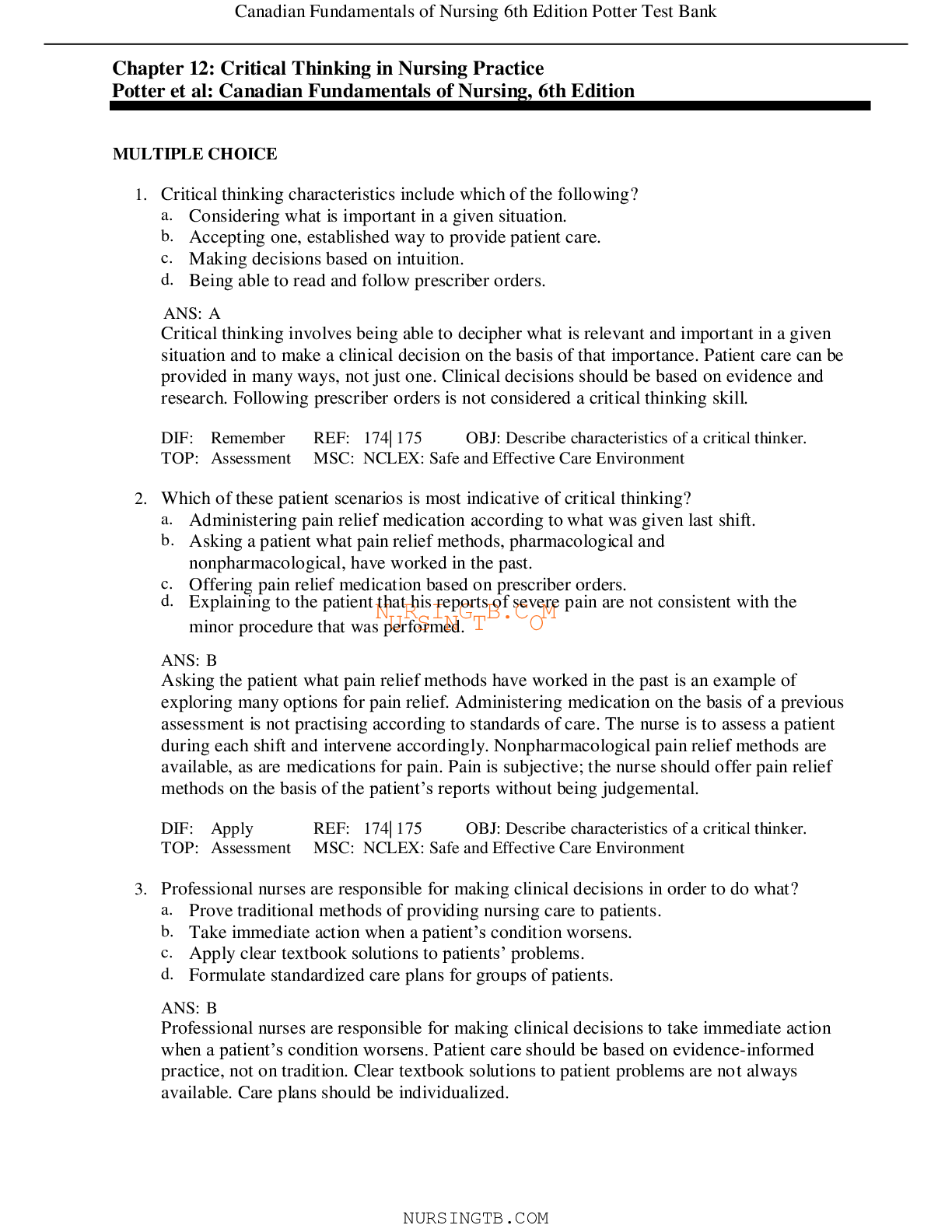
Reviews( 0 )
Document information
Connected school, study & course
About the document
Uploaded On
Aug 07, 2021
Number of pages
8
Written in
Additional information
This document has been written for:
Uploaded
Aug 07, 2021
Downloads
0
Views
32


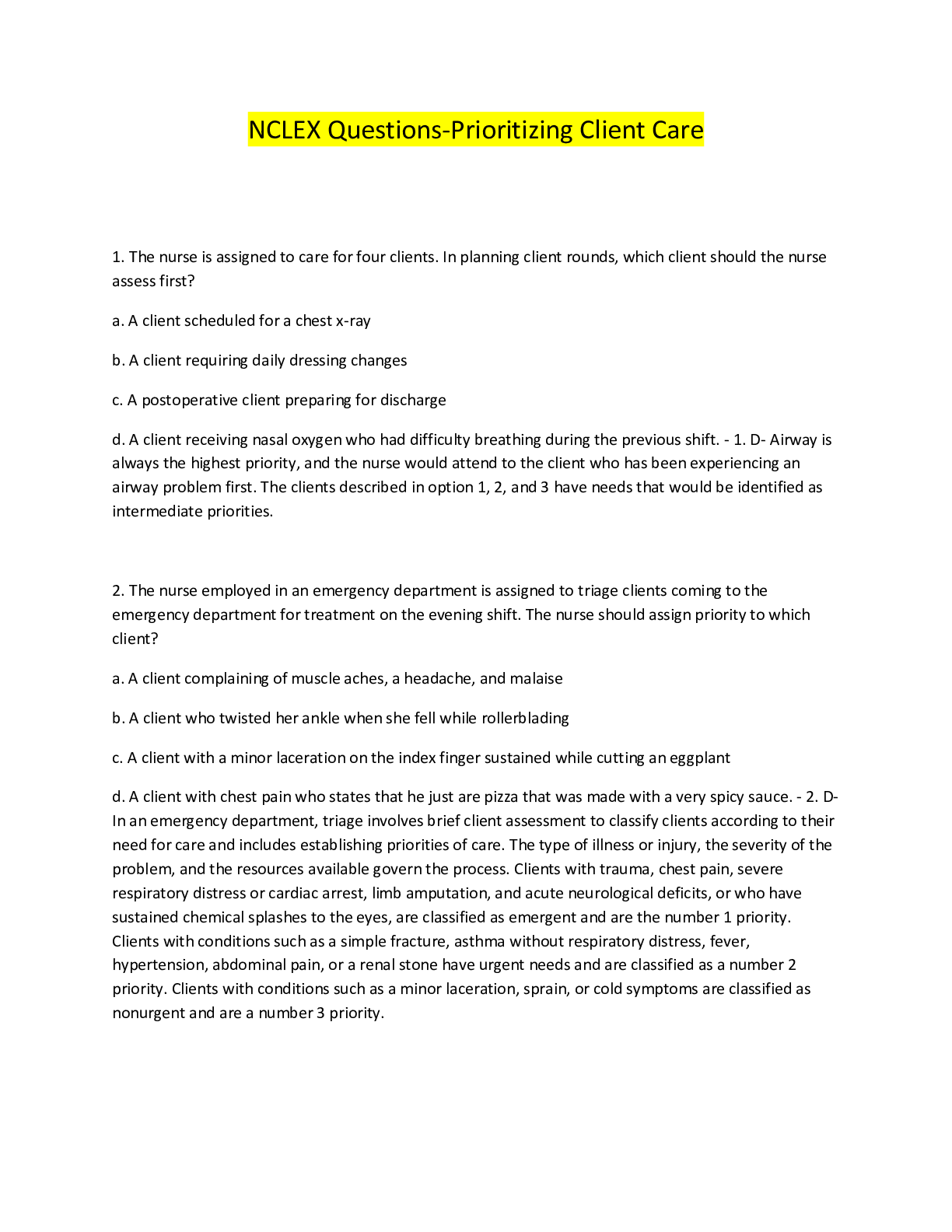
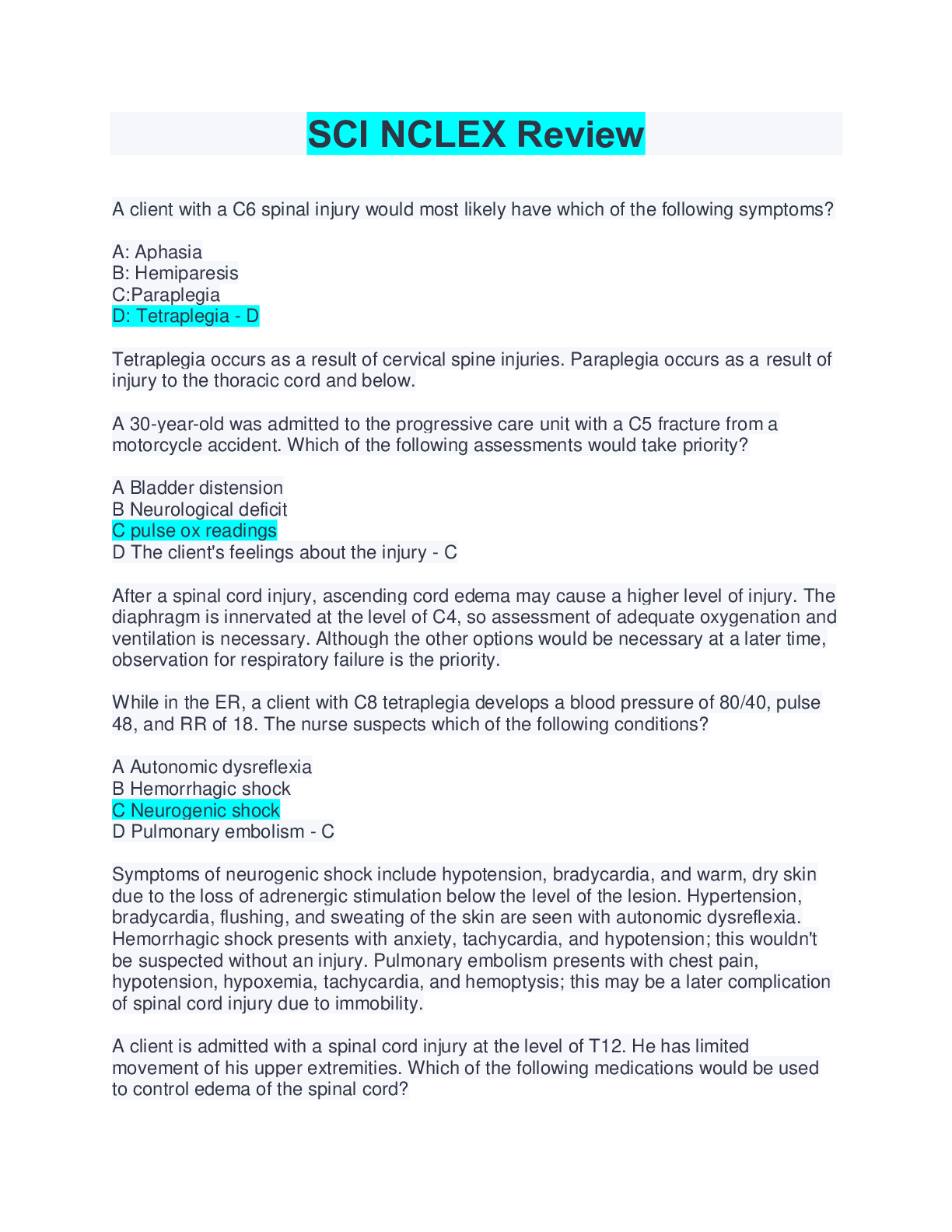

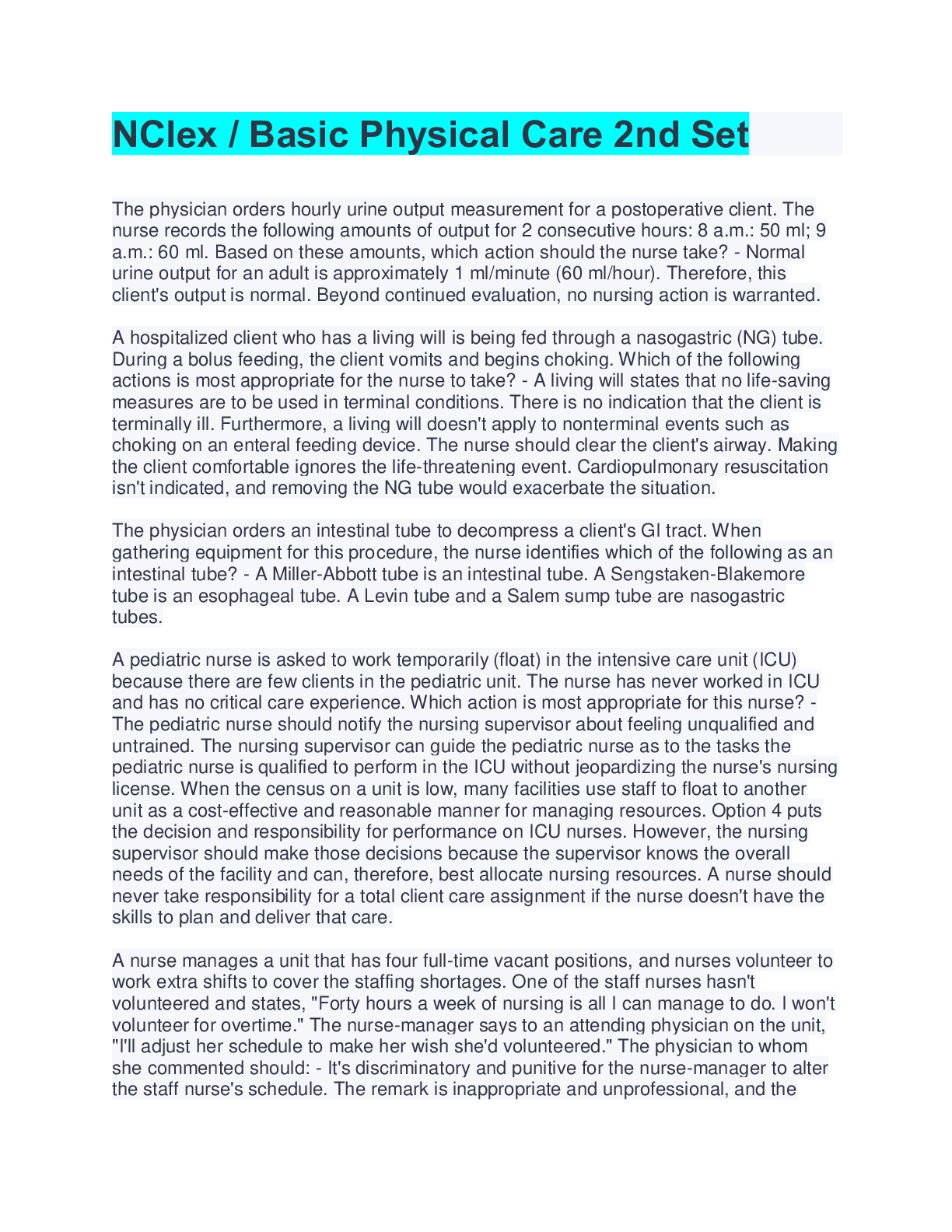
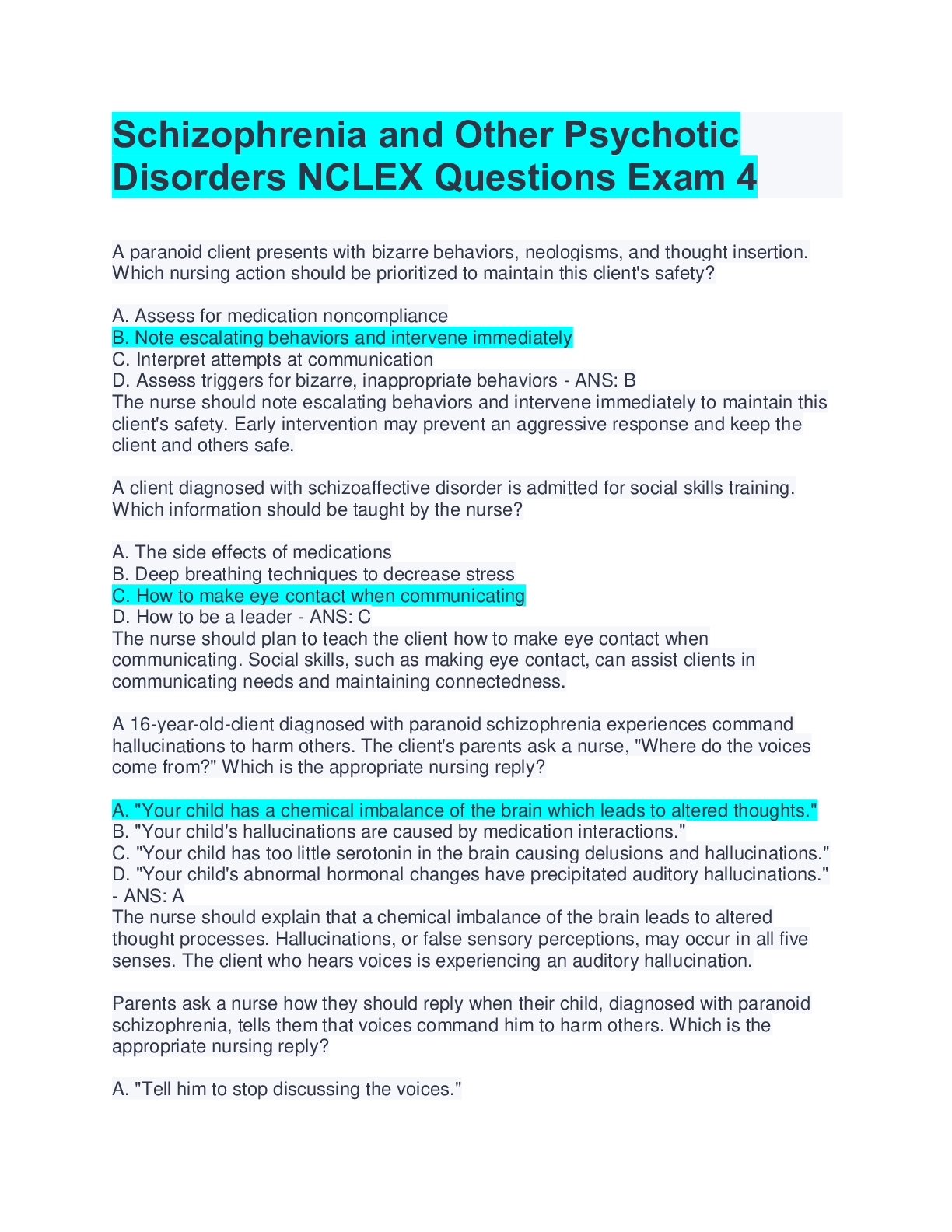
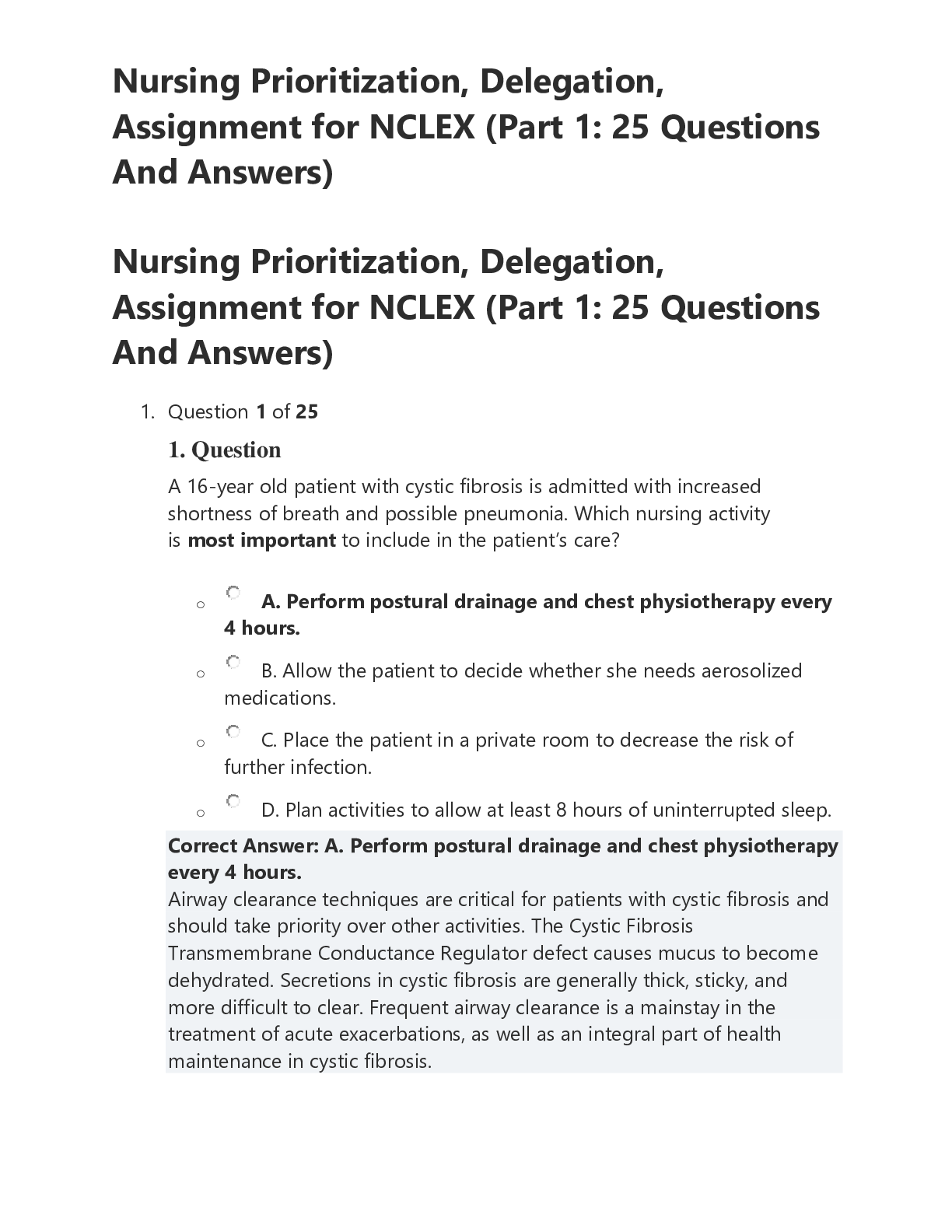
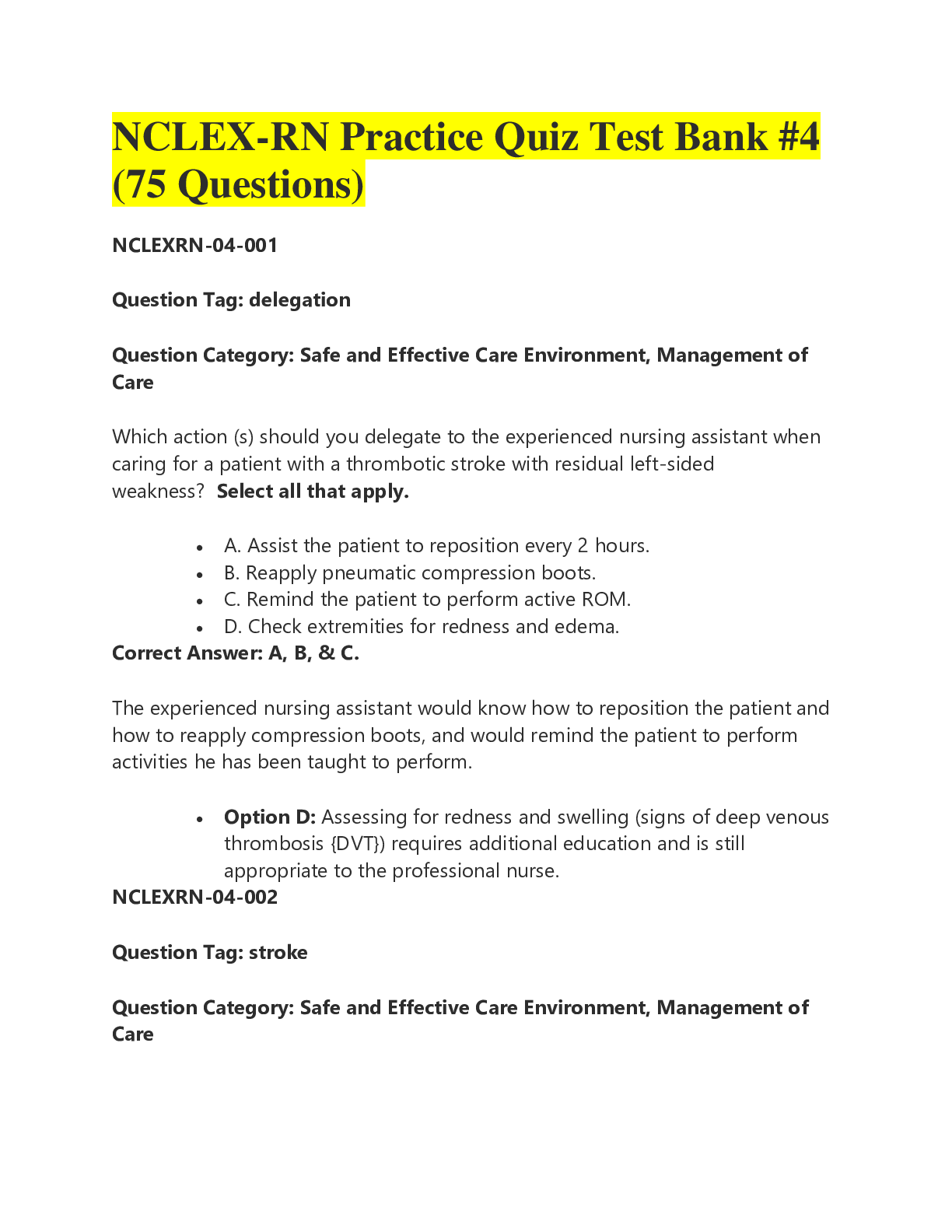
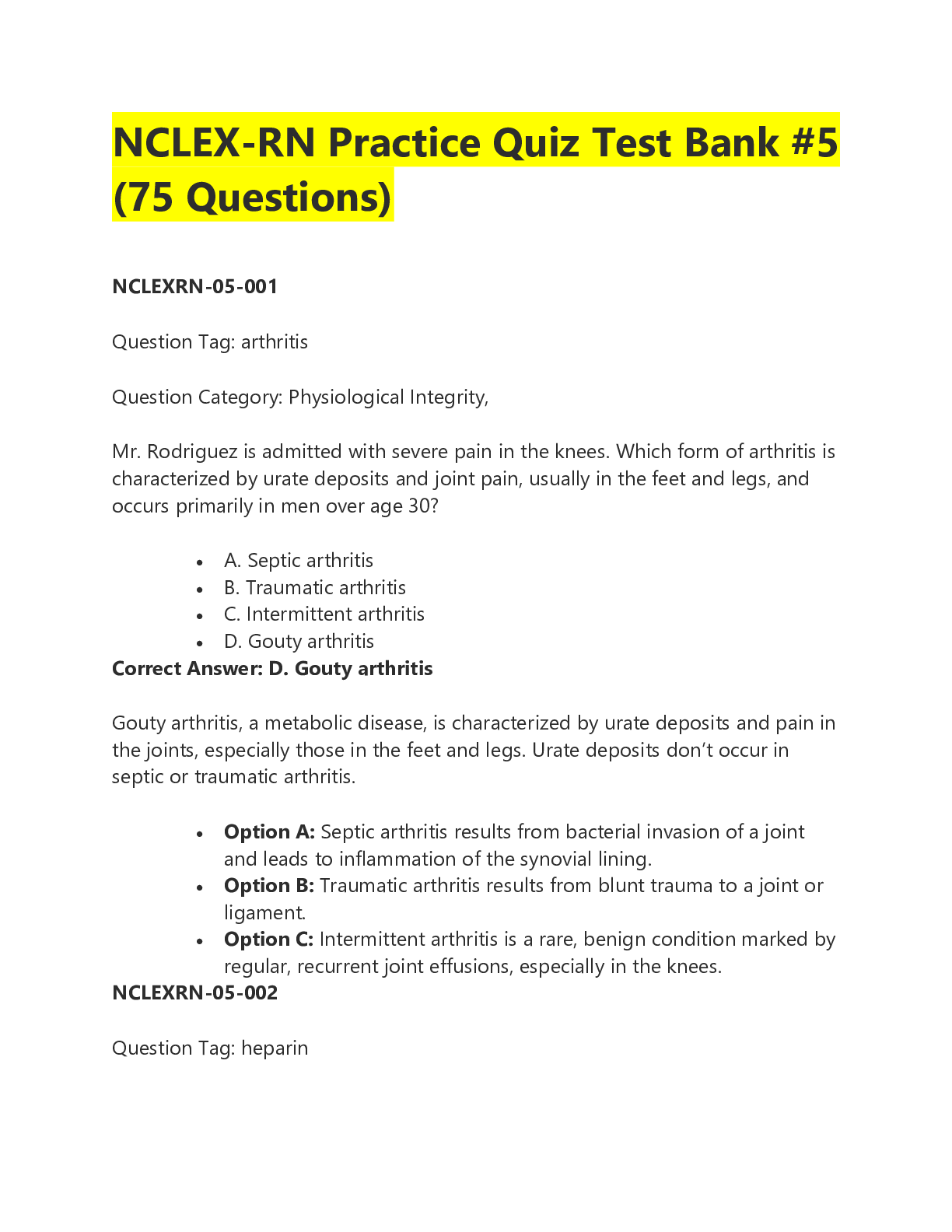

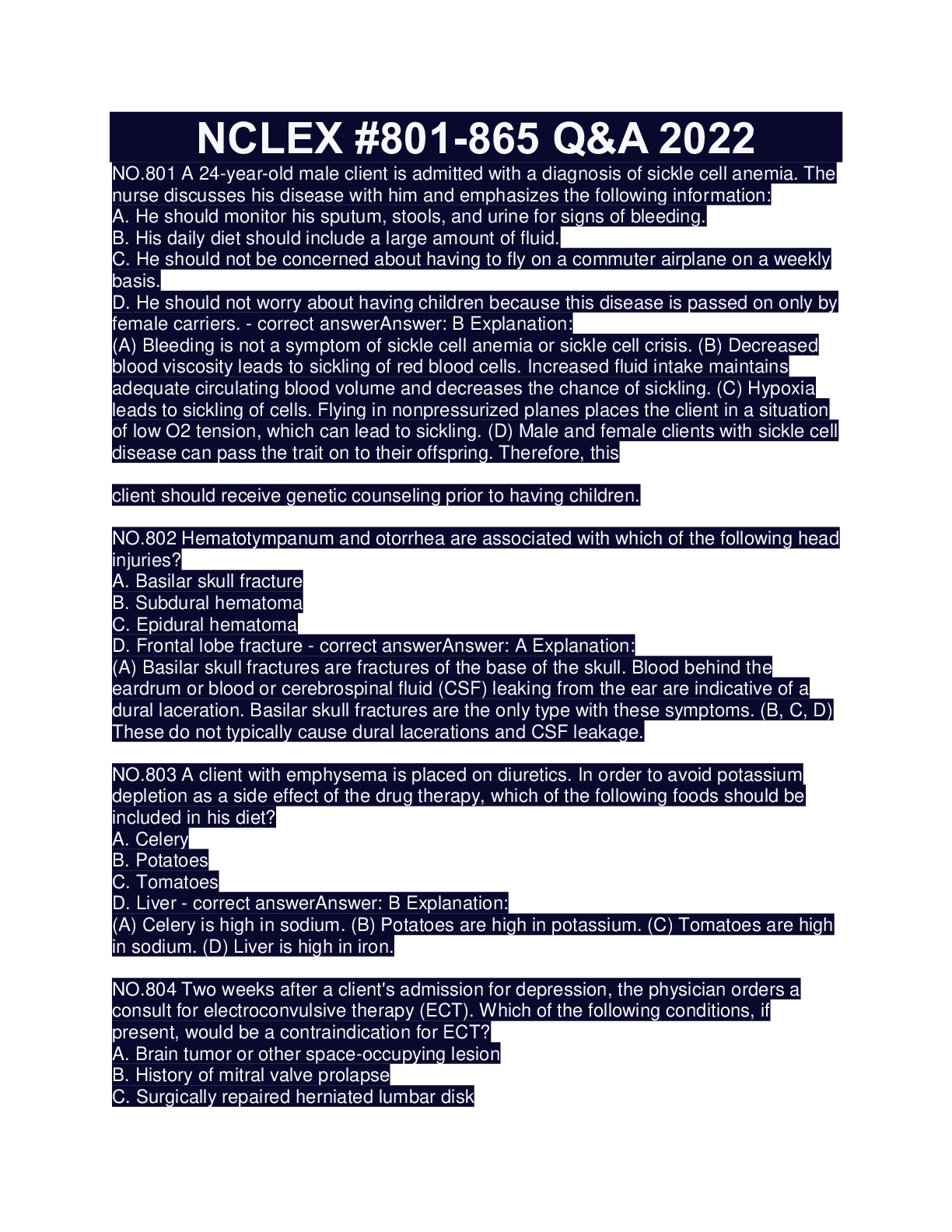
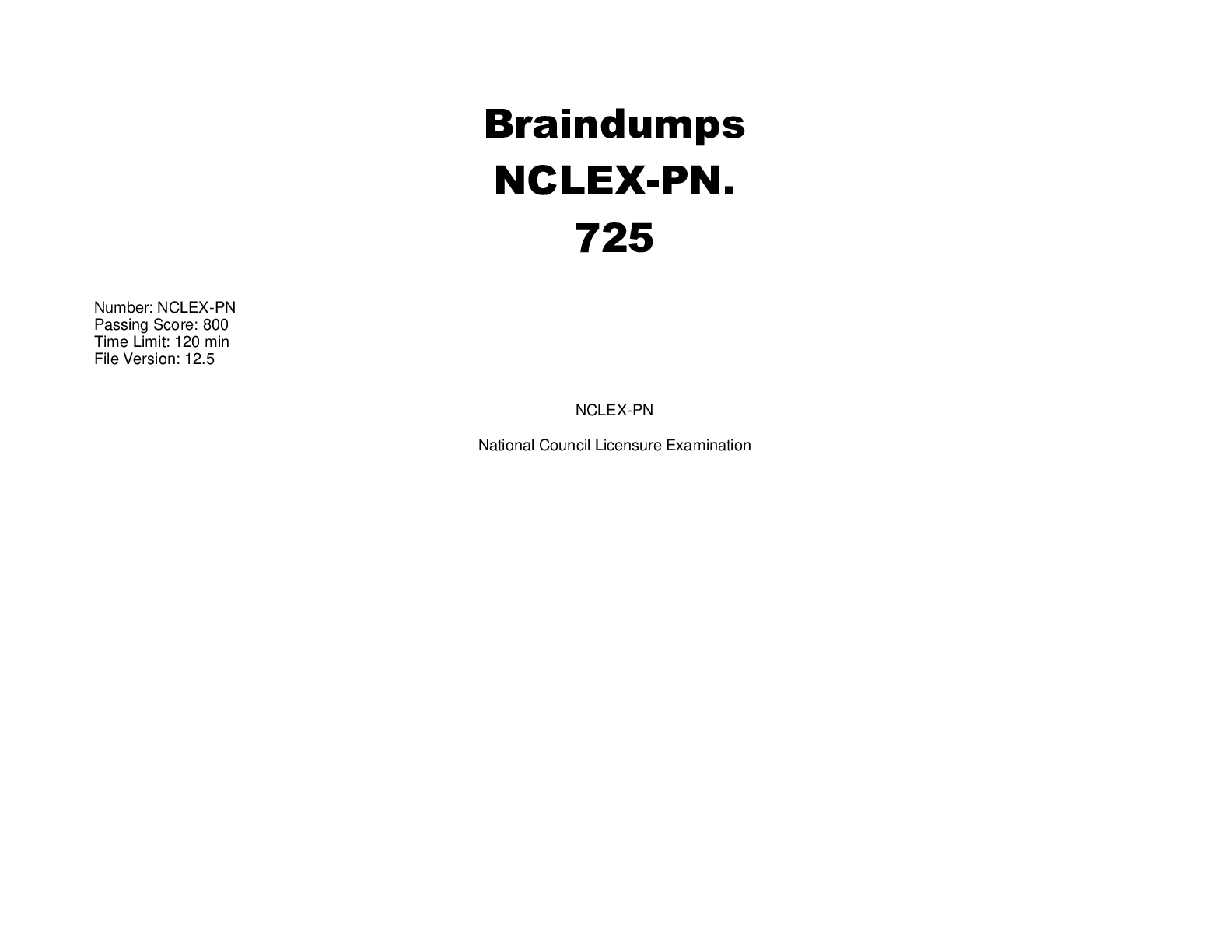
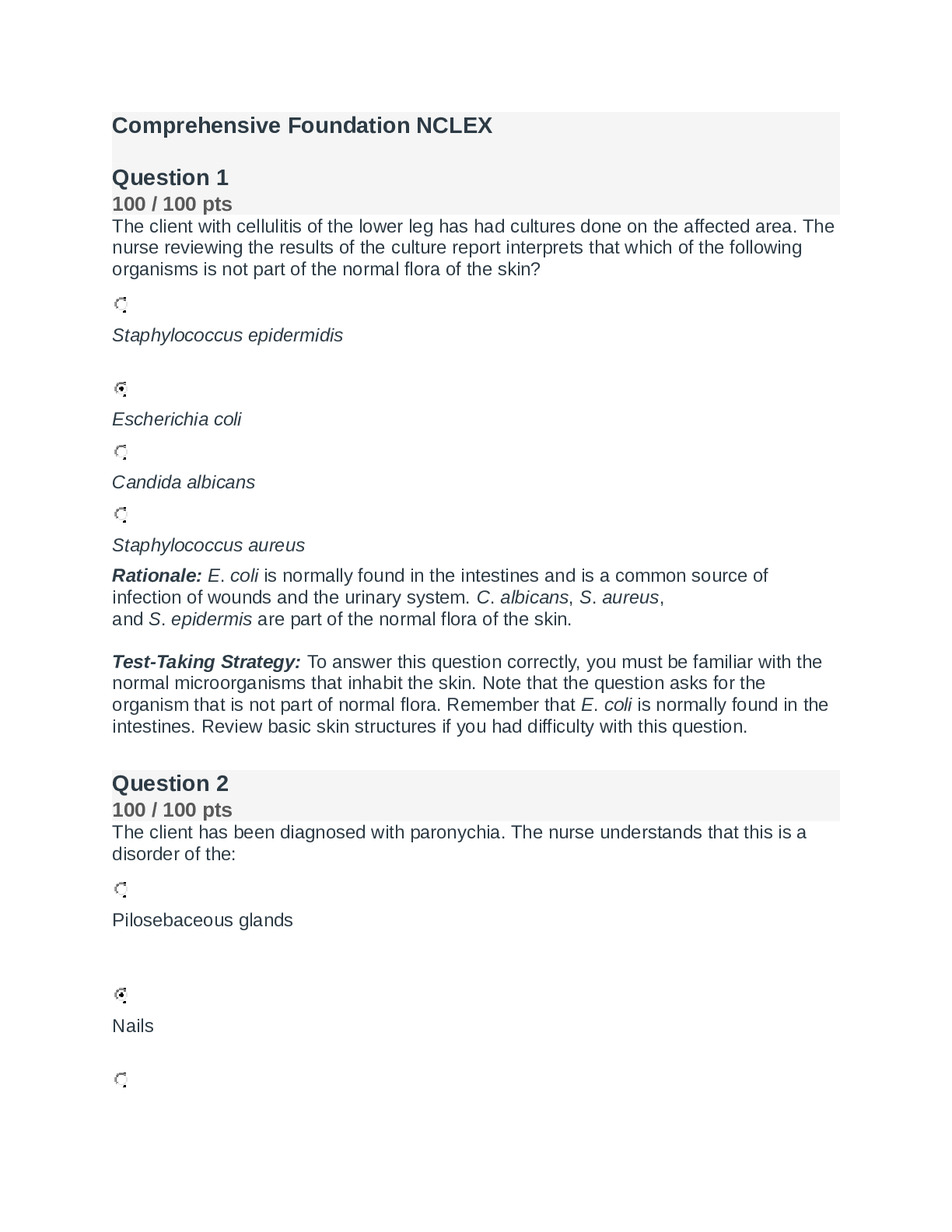
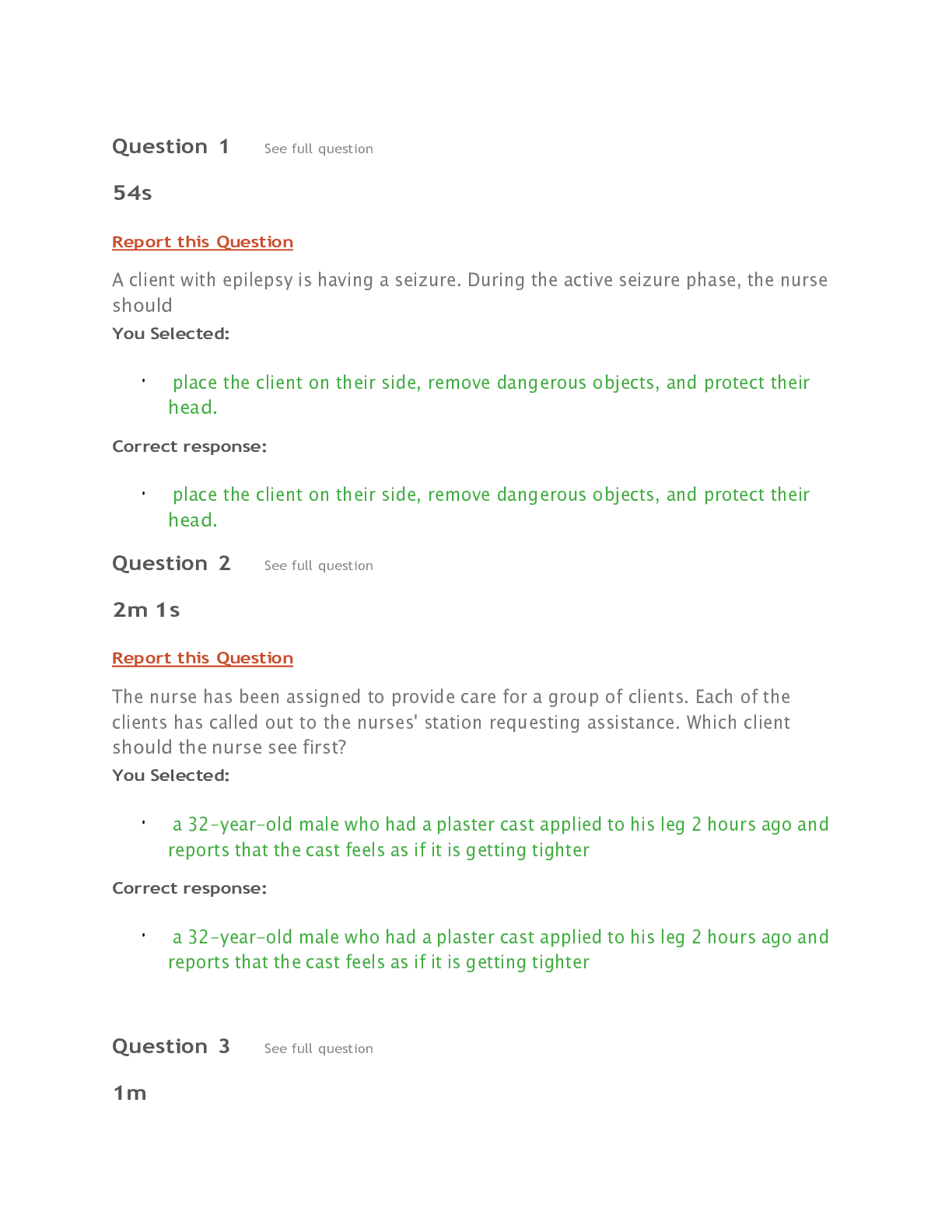
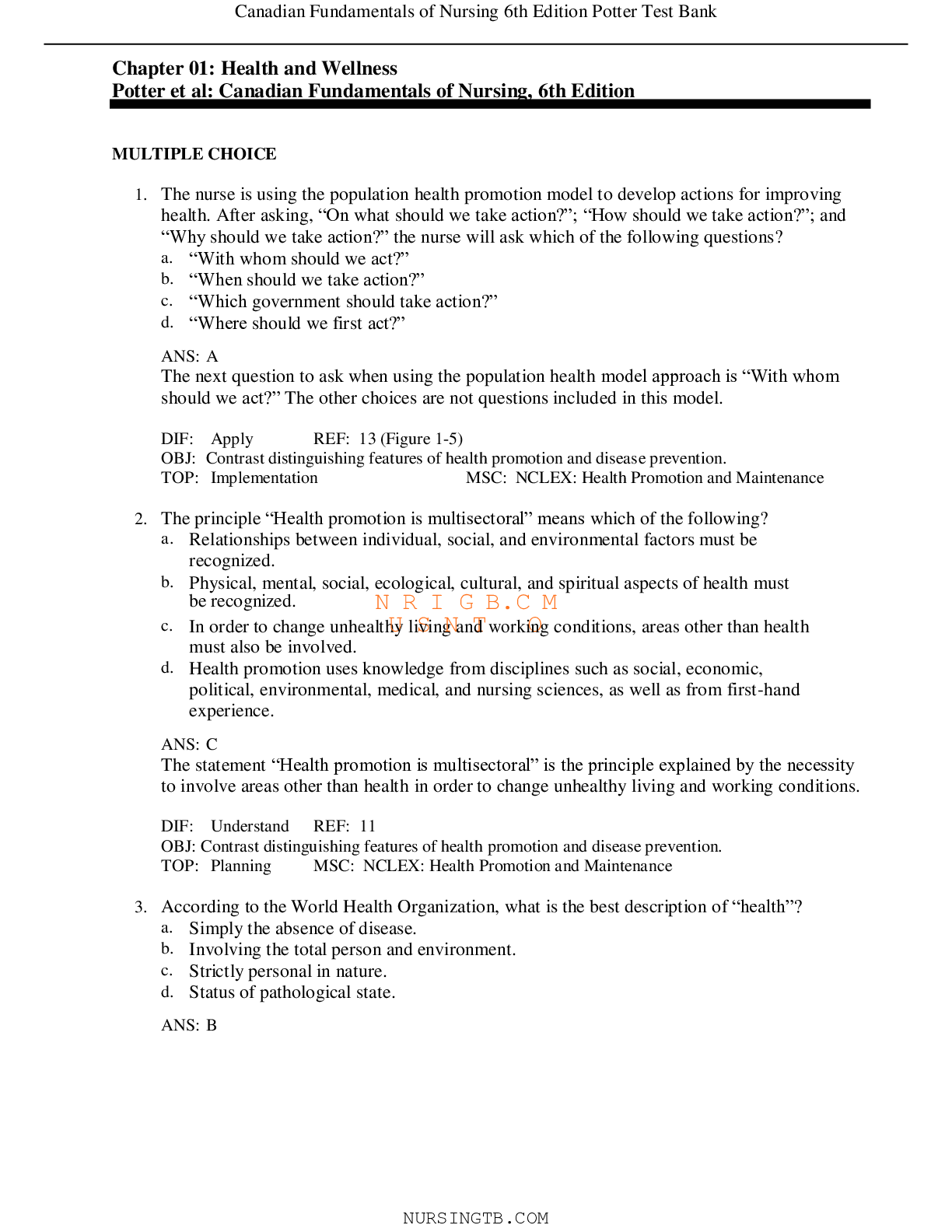




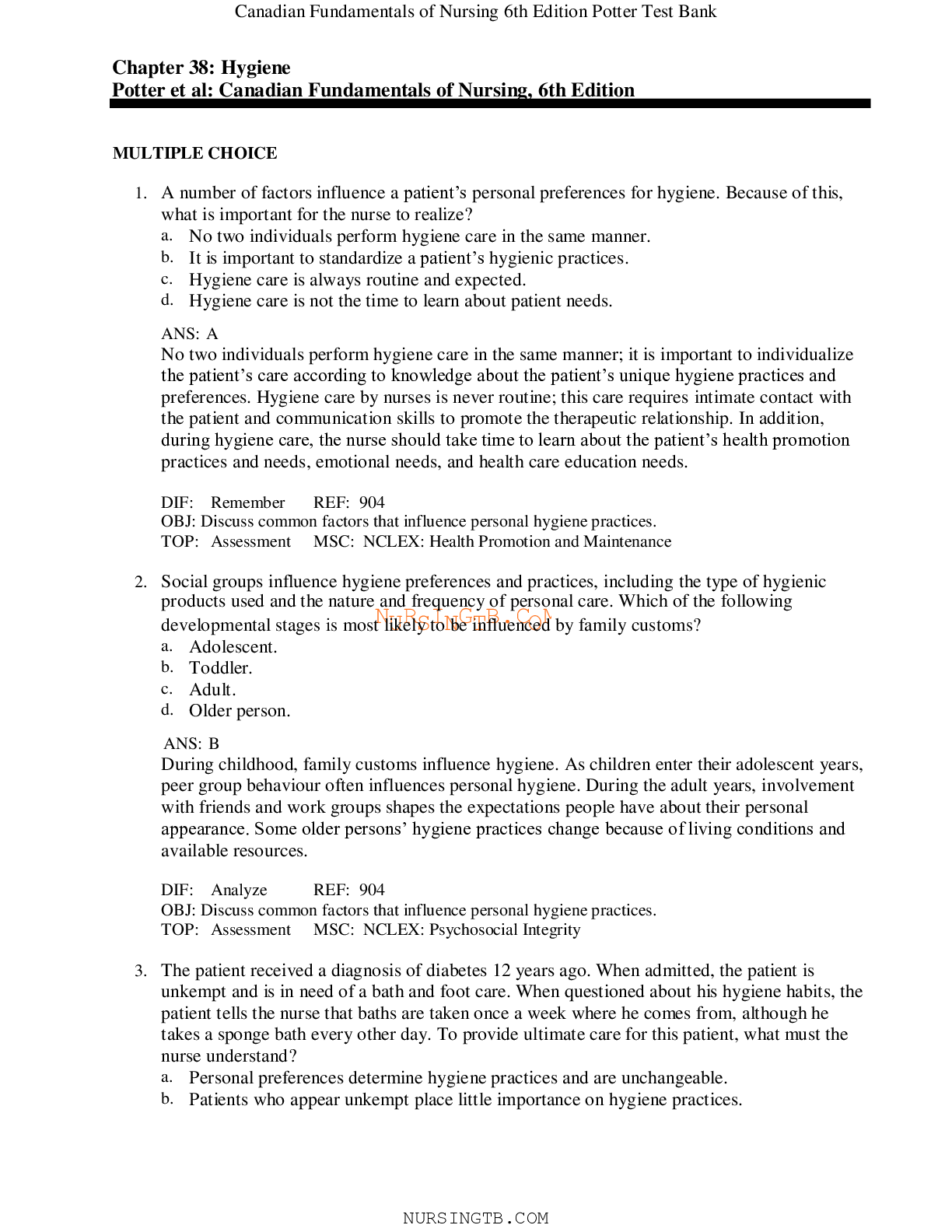

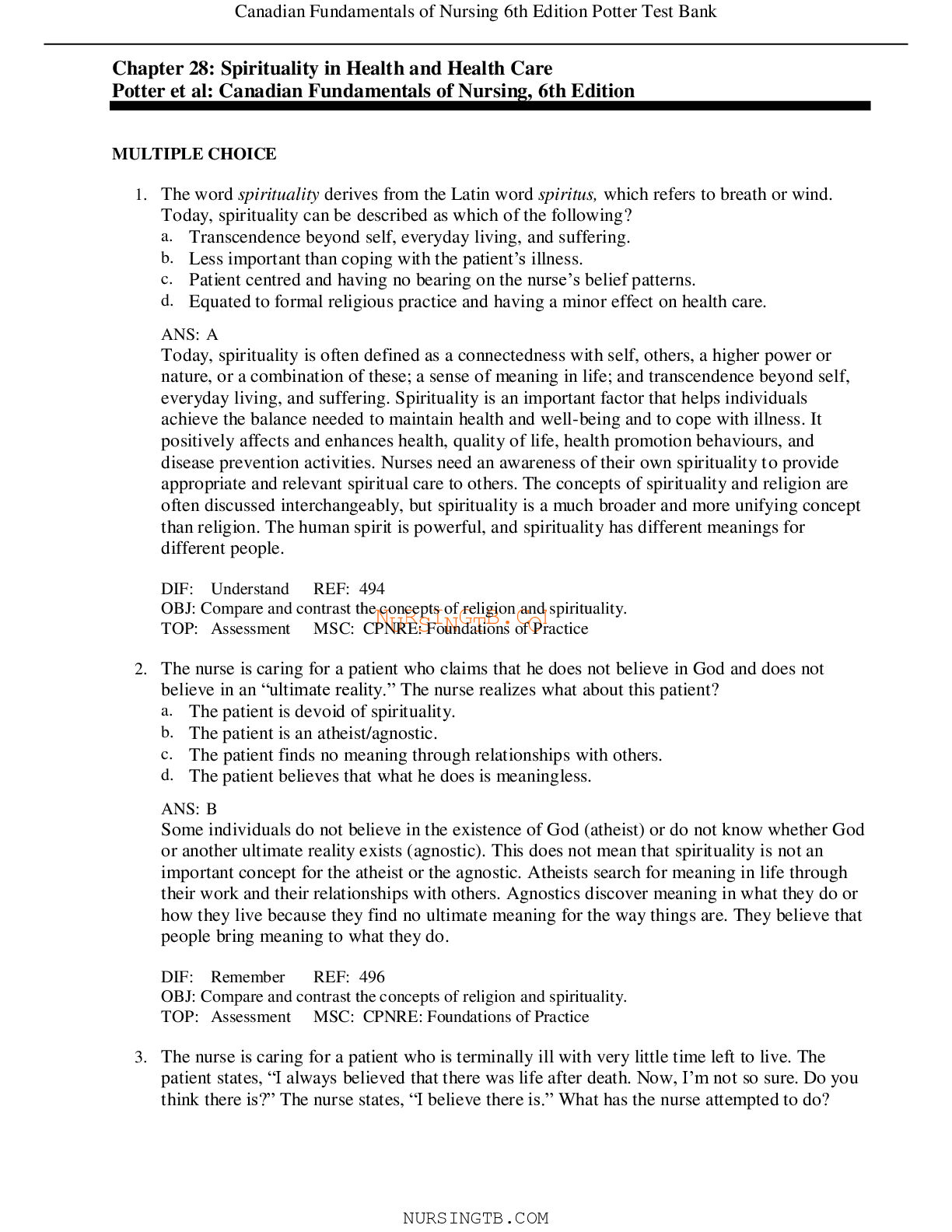


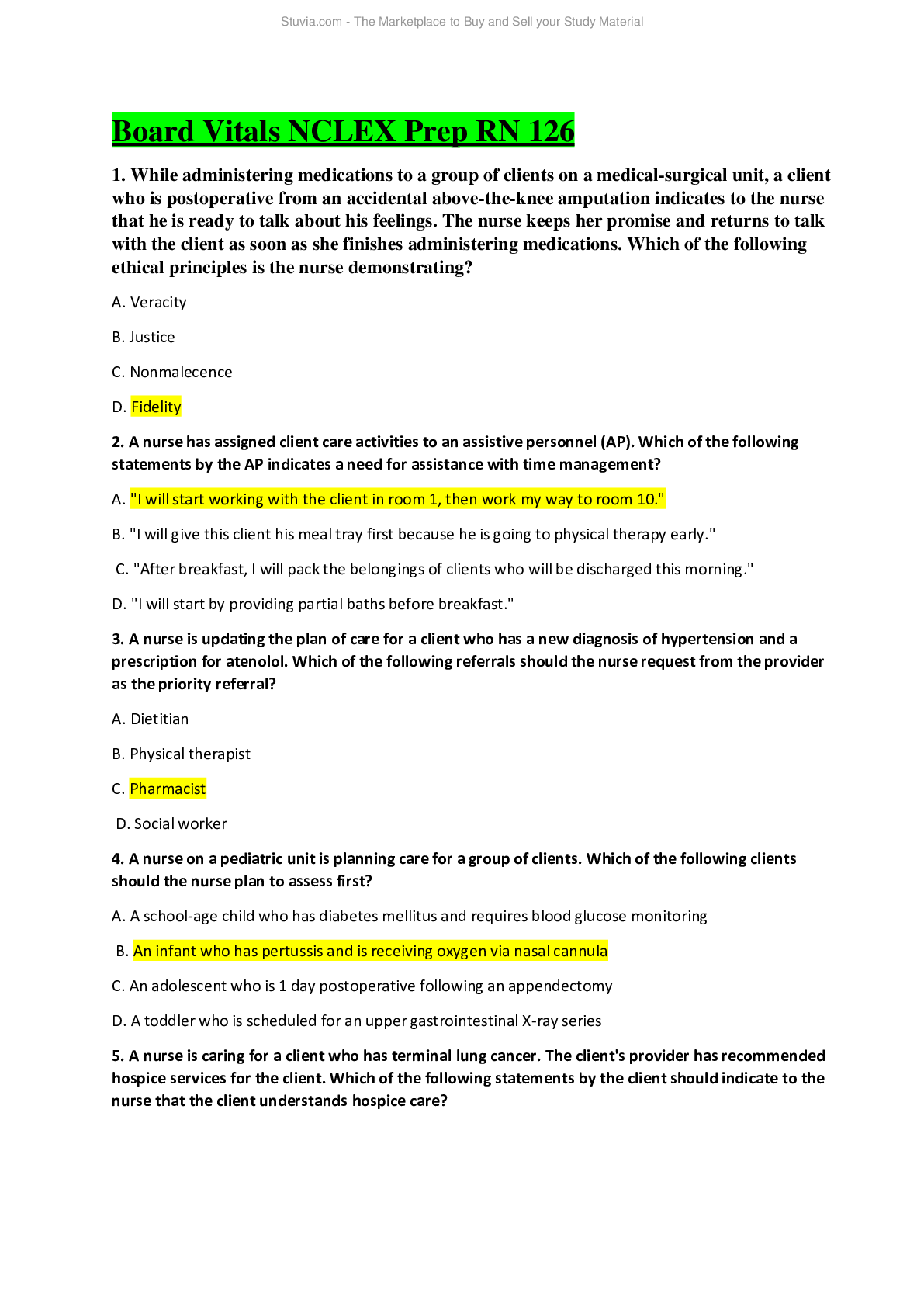

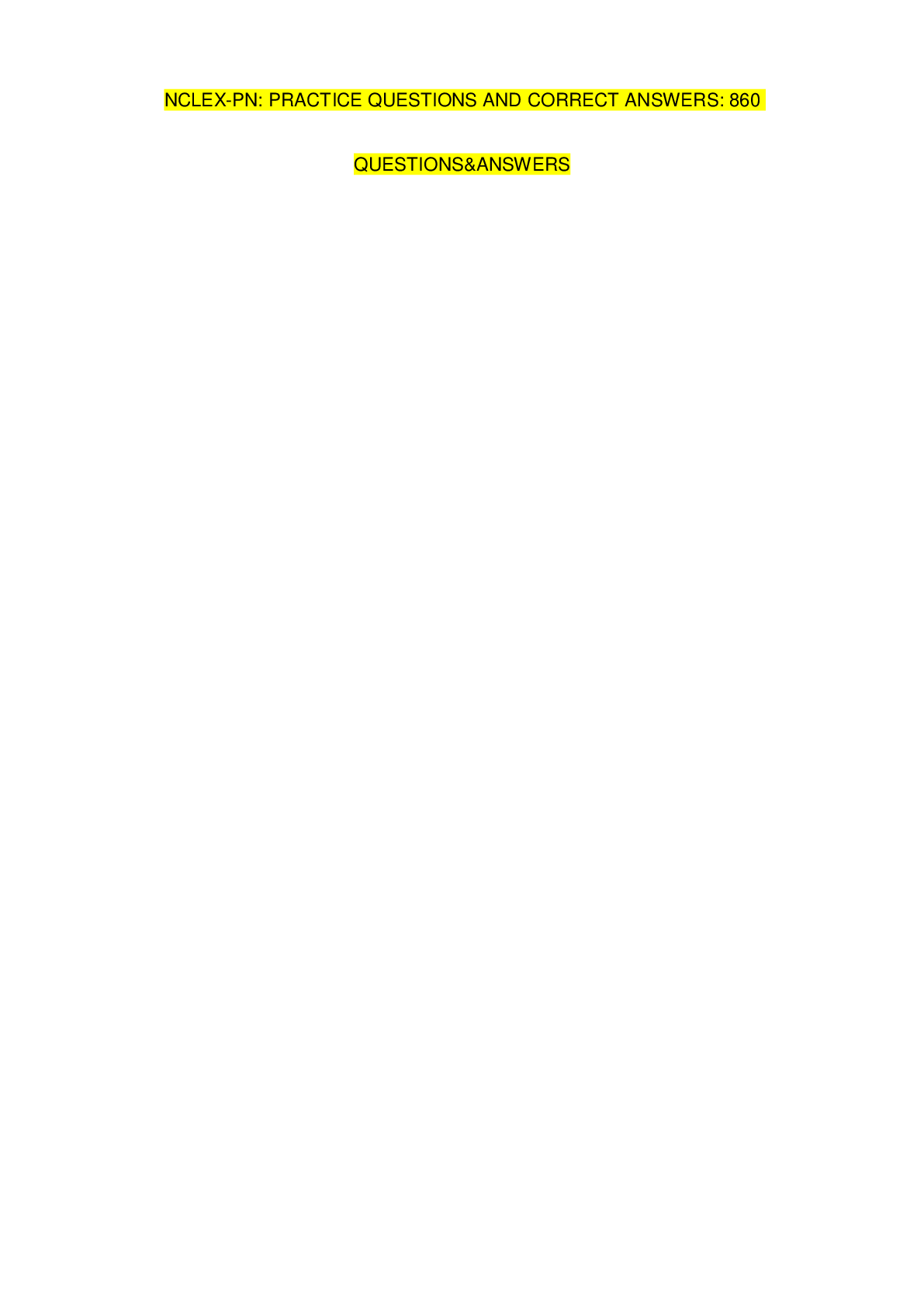

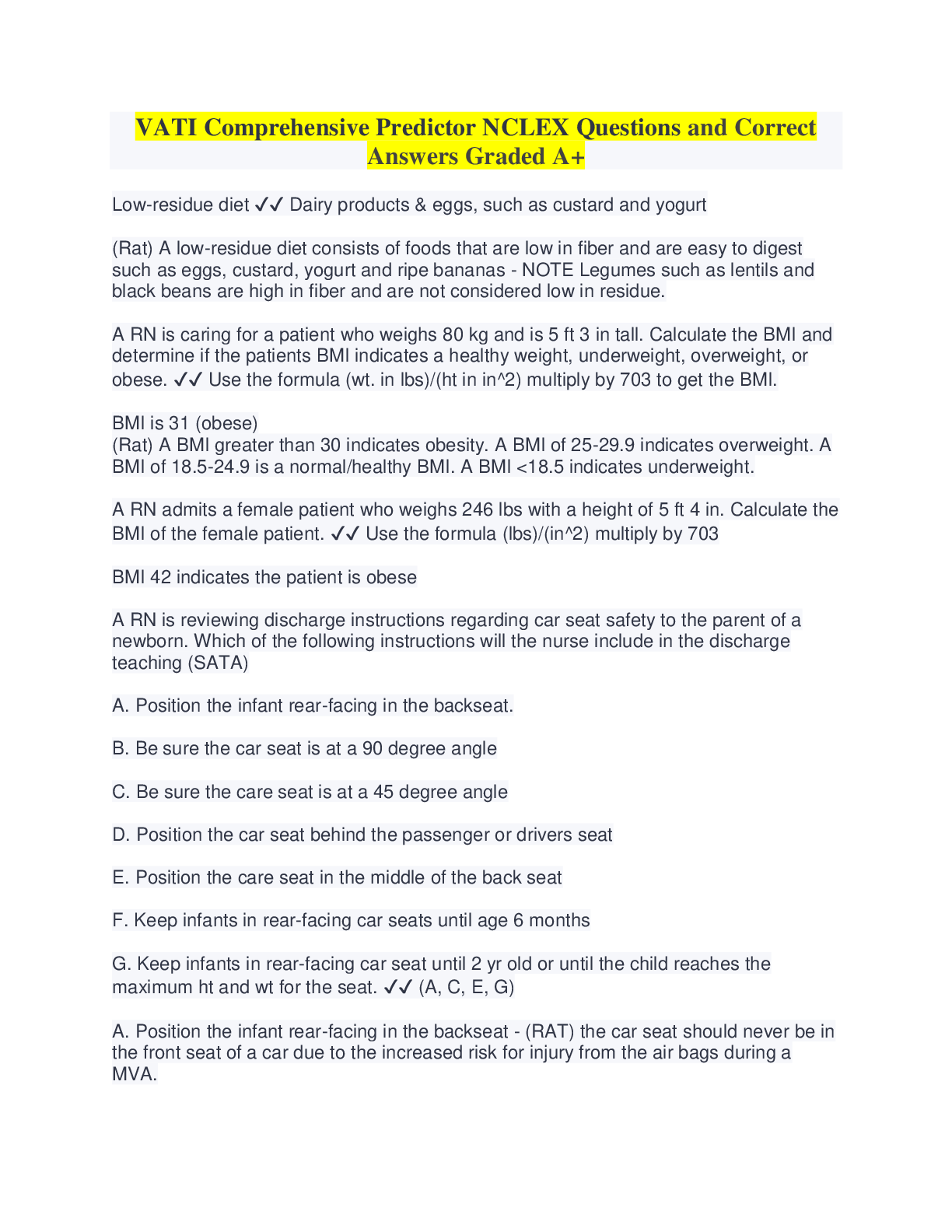
 2022.png)
